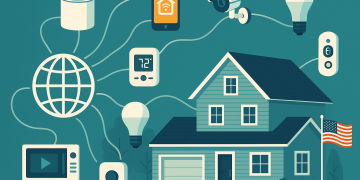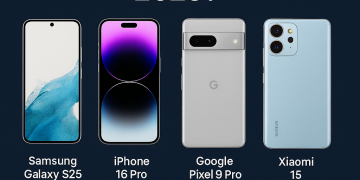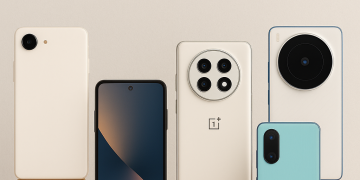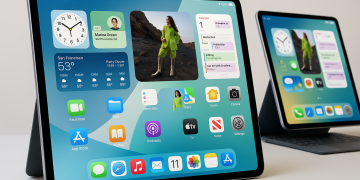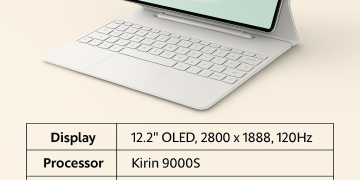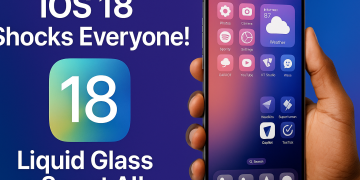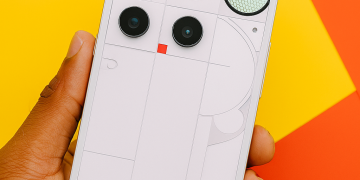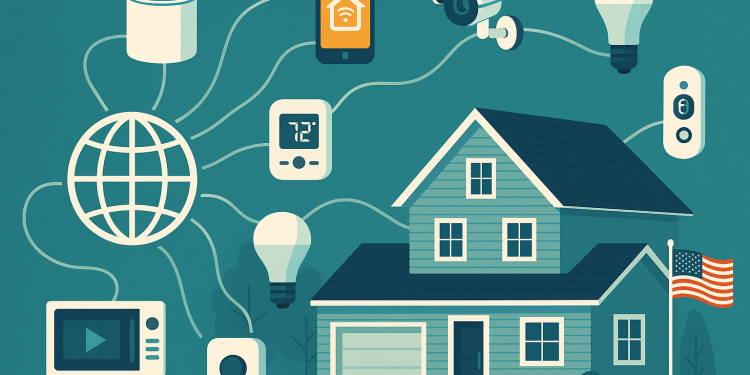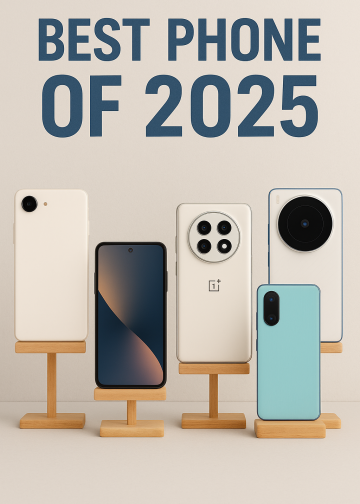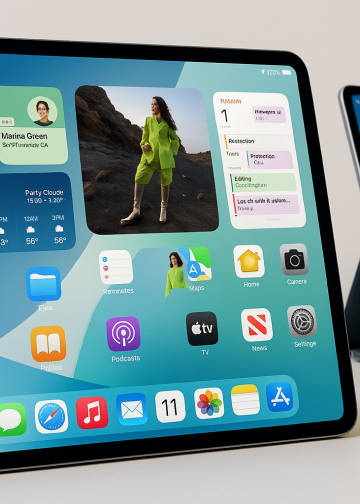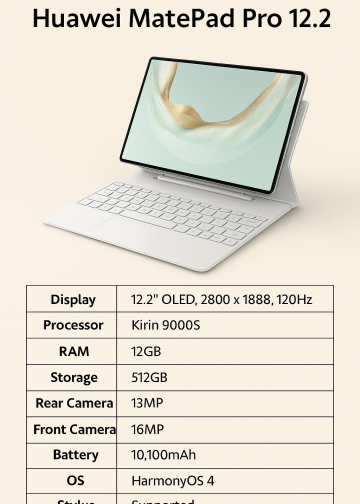Introduction: Welcome to the Connected Home Era
Keywords: smart devices USA, IoT technology, connected home
It’s morning in America, 2025. You wake up to a gentle alarm that mimics the sunrise, the thermostat has already warmed your bedroom, and the coffee pot starts brewing—without you lifting a finger. By the time you check your phone, the refrigerator has sent you a reminder that you’re out of milk. This isn’t science fiction; it’s the reality of life in a connected home powered by smart devices and the relentless progress of IoT technology.
Across the country, Americans are experiencing a quiet revolution as ordinary objects—once passive and “dumb”—become part of the digital world. The smart devices USA wave isn’t just about gadgets; it’s about a lifestyle shift. Whether you’re a tech enthusiast, a busy parent, or someone just trying to make life a bit easier, the impact of the Internet of Things (IoT) on the American tech lifestyle is impossible to ignore.
Smart Devices USA: What Are We Really Talking About?
Keywords: smart devices USA, IoT technology
Let’s get clear: smart devices aren’t just futuristic toys. In 2025, they’re an everyday necessity for millions of Americans. From smart thermostats and voice-activated speakers to connected light bulbs, doorbell cameras, fitness trackers, and even intelligent washing machines—IoT technology is seamlessly woven into daily routines.
What sets these devices apart? It’s their ability to connect, communicate, and even “think” to some degree. Using embedded sensors, wireless networks, and software smarts, smart devices gather data, respond to commands, and even automate tasks you didn’t realize needed automating.
Smart devices USA now account for billions of connections. According to the latest Internet of Things trends, the average American home contains at least 10 connected devices—and for tech-forward families, that number is much higher.
IoT Technology: The Invisible Backbone of Modern Homes
Keywords: IoT technology, connected home, Internet of Things trends
You probably don’t notice the invisible magic that keeps your smart home running—but that’s the point. IoT technology is designed to be almost invisible. Behind every automated light switch, smart lock, or voice command is a mesh of wireless protocols (like Wi-Fi, Zigbee, and Z-Wave), cloud services, and mobile apps. These connect your devices to each other and to you, no matter where you are.
A connected home is about more than just convenience. It’s about efficiency, security, and comfort. For example:
- Smart thermostats learn your routines and adjust heating and cooling to save energy.
- Connected security cameras let you check in on your home from anywhere, giving you peace of mind.
- Automated lighting saves electricity and makes sure you never come home to a dark house.
The biggest Internet of Things trends show Americans now expect their homes to “just work”—anticipating needs, preventing problems, and even providing a little bit of daily delight.
The American Tech Lifestyle: How IoT Is Changing Daily Life
Keywords: American tech lifestyle, smart devices USA, connected home
If you want to understand how deeply IoT technology has reshaped the American tech lifestyle, just look around:
- Busy parents rely on smart speakers to organize family calendars, set reminders, and even help kids with homework.
- Remote workers use smart home hubs to automate their work-from-home setup—lighting, temperature, and even coffee breaks are perfectly tuned.
- Health-conscious users wear fitness trackers and smartwatches that monitor activity, heart rate, sleep quality, and even stress levels—sending alerts directly to their smartphones.
The trend is clear: smart devices USA are not just about luxury. They’re about making life more manageable, safer, and even healthier for everyday Americans.
Internet of Things Trends: What’s Hot in 2025
Keywords: Internet of Things trends, IoT technology, smart devices USA
It’s 2025, and Internet of Things trends are evolving faster than ever. Here’s what’s making headlines:
1. Voice Is the New Remote
Forget hunting for a remote or scrolling through menus. Voice control is now the dominant interface for smart homes. “Alexa, turn off the lights.” “Hey Google, lock the front door.” Simple, intuitive, and accessible—even for kids and seniors.
2. Smarter Security
Americans are serious about safety. Connected cameras, smart locks, and doorbell cams have become mainstream. Real-time alerts, face recognition, and integration with emergency services mean you’re always in the know.
3. Sustainability First
Eco-friendly smart devices are surging. Smart sprinklers that adjust for weather, energy monitors that cut waste, and smart appliances that run during off-peak hours—saving money and the planet at the same time.
4. Health & Wellness Integration
From smart beds that track sleep cycles to air quality sensors that warn about pollen or pollution, IoT is bringing health insights into the home environment.
5. Seamless Automation
It’s not about one device—it’s about the ecosystem. Devices now work together. Your morning alarm triggers the lights, starts the coffee, and adjusts the thermostat. When you leave, the house locks itself and turns down the heat.
These Internet of Things trends are redefining the American home as a dynamic, responsive environment.
The Security Challenge: Keeping Your Connected Home Safe
Keywords: smart devices USA, online security, IoT technology, digital privacy
Of course, the rise of smart devices also means new security risks. Every device that connects to the internet is a potential target for hackers. In fact, one of the fastest-growing cybercrime categories in the USA is attacks on IoT devices.
Online security in the era of the connected home means:
- Using strong, unique passwords for each device and changing them regularly.
- Keeping devices updated with the latest firmware to patch vulnerabilities.
- Segmenting your network (putting IoT gadgets on a separate Wi-Fi network from your computers and phones).
- Disabling features you don’t use (such as remote access) to limit your attack surface.
Digital privacy is another big concern. Many smart devices collect more data than you might realize. It’s important to read privacy policies, limit data sharing, and know where your information is going.
The bottom line: tech safety is now part of home safety, and a little vigilance goes a long way.
From Convenience to Necessity: Why Smart Devices Are Here to Stay
Keywords: smart devices USA, American tech lifestyle, connected home
What began as a “cool factor” has now become essential. For most Americans, smart devices are as much a part of daily life as electricity and running water.
Why? Because they solve real-world problems:
- Parents can check on kids remotely or even get a ping if someone tries to open the liquor cabinet.
- Elderly people can live more independently with smart sensors that alert loved ones to falls or health issues.
- Pet owners can monitor and feed pets from miles away.
In a country where everyone is always on the go, smart devices USA are making home life safer, more comfortable, and more manageable.
Challenges and Pitfalls: When Smart Isn’t Always Easy
Keywords: smart devices USA, IoT technology, American tech lifestyle
Let’s be honest: it’s not all sunshine and perfectly brewed coffee. Smart devices sometimes get things wrong—or stop working at the worst possible moment.
- Connectivity issues: A spotty Wi-Fi signal can turn a smart home into a dumb home, fast.
- Compatibility headaches: Not every device plays nicely with every platform. Ever tried to connect a new gadget only to find out it’s not compatible with your home hub? Frustrating!
- Learning curve: For non-tech-savvy users, setup and troubleshooting can be overwhelming.
Still, American tech lifestyle is all about innovation—and the industry is working hard to make things more user-friendly every year.
The Future of the Connected Home: What’s Next?
Keywords: connected home, Internet of Things trends, IoT technology, smart devices USA
So, what’s coming next in the world of IoT technology and connected homes? Here are some exciting possibilities:
Hyper-Personalized Automation
Your home will know you better than you know yourself. Based on your routines, preferences, and even your mood, your smart devices will adjust everything from lighting and temperature to playlists and recipes—without you lifting a finger.
More Natural Interfaces
Gesture control, facial recognition, and even “smart fabrics” built into furniture are on the horizon, making interaction with your home feel seamless.
Smart Neighborhoods
Imagine communities where homes communicate with each other for shared energy use, enhanced security, and even neighborhood-wide health monitoring (think pandemic prevention!).
Privacy-First Design
Given the growing concern over digital privacy, expect smart devices to offer more control and transparency over what data is collected and how it’s used.
AI-Powered Insights
The next generation of IoT will use artificial intelligence to analyze patterns, predict needs, and optimize everything from your grocery list to your commute.
As these Internet of Things trends unfold, the definition of “home” in America will keep evolving—more connected, more intuitive, and maybe a little bit smarter than you ever imagined.
Real-Life Stories: Americans and Their Smart Homes
Keywords: smart devices USA, connected home, American tech lifestyle
Let’s get personal—because the best way to understand the impact of smart devices is through real stories:
- Laura, a nurse in Chicago: Swears by her smart doorbell camera, which lets her see and talk to visitors while she’s working night shifts. She says it’s made her feel safer living alone.
- The Tran Family in Houston: Their smart thermostat and automated blinds have cut their energy bill by 30%. “We never realized how much we were wasting until the devices showed us the data,” says Mr. Tran.
- Grandma Evelyn in Vermont: Uses a smart speaker to listen to audiobooks, call her grandchildren with a simple voice command, and even remind her to take medication.
- Chris and Mike in Seattle: Love how their connected kitchen gadgets help with meal prep and grocery shopping. “Our fridge suggests recipes based on what’s inside. It’s like living in the future!”
Stories like these are playing out across the country, showing that the American tech lifestyle is more than just hype—it’s a new kind of normal.
Tips for Building Your Own Connected Home
Keywords: smart devices USA, IoT technology, connected home
Ready to make your home smarter? Here are some tips to get started:
- Start Small: Try one or two devices (a smart speaker and a thermostat are great entry points).
- Check Compatibility: Make sure new gadgets will work with your existing devices and platforms (Alexa, Google Home, Apple HomeKit, etc.).
- Prioritize Security: Set strong passwords, keep software updated, and use network segmentation.
- Plan for Growth: As you add more devices, think about your Wi-Fi coverage and potential future needs.
- Have Fun: Explore automations, routines, and integrations—half the joy is discovering what your smart home can do!
Remember, you don’t have to transform everything overnight. Building a connected home is a journey—and the more you experiment, the more you’ll find what works for you.
External Links
- Consumer Reports: Guide to Smart Home Devices
- Internet Society: What is the Internet of Things?
- The Verge: Latest Smart Home News
- US-CERT: Securing the Internet of Things
Call to Action
Are you ready to join the smart home revolution? Share your experience or questions about smart devices USA in the comments below! For more tips on IoT technology, connected home ideas, and the latest Internet of Things trends, subscribe to our newsletter and become part of the new American tech lifestyle. Don’t forget to share this article with friends—because the future of home is too good to keep to yourself!












